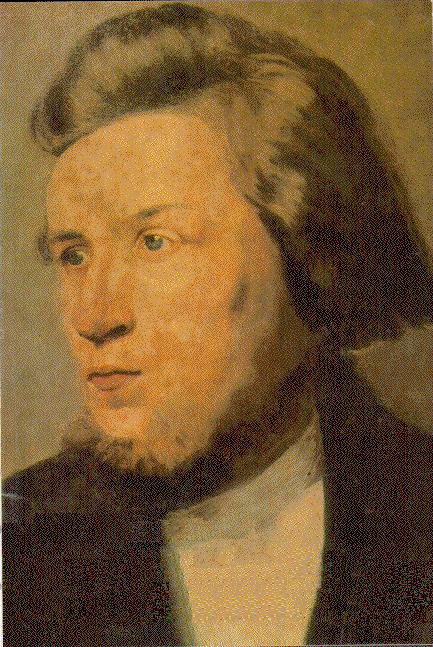|
John Hansen Sørbrøden
John Hansen Sørbrøden (3 May 1775 – 8 December 1857) was a Norwegian farmer, lay preacher and politician. He was born of the Sørbrøden in Berg parish in Østfold, Norway. He grew up within a farm family which figured prominently in the Haugean Movement (''haugianere''). The family farm became a Haugean center in the area. He represented Smaalenene (now Østfold) at the Norwegian Constituent Assembly at Eidsvoll Eidsvoll (; sometimes written as ''Eidsvold'') is a municipality in Akershus in Viken county, Norway. It is part of the Romerike traditional region. The administrative centre of the municipality is the village of Sundet. General information ... in 1814, and was elected member of the Parliament of Norway from 1833. References 1775 births 1857 deaths Norwegian farmers Fathers of the Constitution of Norway {{Norway-politician-1770s-stub ... [...More Info...] [...Related Items...] OR: [Wikipedia] [Google] [Baidu] |
Berg, Østfold
Berg is a former parish and municipality which now forms part of Halden municipality in Østfold county, Norway. The rural municipality was (together with Idd) was merged with the city of Halden on January 1, 1967. History Berg was the main parish in a district which included Rokke and Halden until 1721. Halden subsequently became the main parish in the district. By a royal proclamation in 1769, Berg became the head of its own district with Rokke and Asak as annexes. The parish of Berg was established as a municipality January 1, 1838 (see formannskapsdistrikt). The Østfold Line was built through Berg in 1879 and Berg Station was opened to serve it. The name The municipality (originally the parish) was named after the farm Berg (Old Norse ''Berg''), since the first church was built on its ground. The name is identical with the word ''berg'' meaning 'rocky hill; mountain'. Berg Church Berg stone church (''Berg steinkirke'') dates from ca. 1100. The edifice is in Romanesque ... [...More Info...] [...Related Items...] OR: [Wikipedia] [Google] [Baidu] |
Norwegian Constituent Assembly
The Norwegian Constituent Assembly (in Norwegian ''Grunnlovsforsamlingen'', also known as ''Riksforsamlingen'') is the name given to the 1814 constitutional assembly at Eidsvoll in Norway, that adopted the Norwegian Constitution and formalised the dissolution of the union with Denmark. In Norway, it is often just referred to as ''Eidsvollsforsamlingen'', which means ''The Assembly of Eidsvoll''. The Assembly The election started in February 1814 in Christiania (now Oslo) in order to draft the Norwegian Constitution. The Assembly gathered at the manor house at Eidsvoll (''Eidsvollsbygningen'') and became known as "The Men of Eidsvoll" (''Eidsvollsmennene''). They first met on 10 April by Eidsvoll Church before the assembly formally opened the next day. It was intended to be composed of delegates from the entire country but the northernmost parts were not represented because of the long distances and lack of time. The presidents and vice presidents of the assembly were chosen ... [...More Info...] [...Related Items...] OR: [Wikipedia] [Google] [Baidu] |
Østfold
Østfold is a traditional region, a former county and a current electoral district in southeastern Norway. It borders Akershus and southwestern Sweden (Västra Götaland County and Värmland), while Buskerud and Vestfold are on the other side of Oslofjord. The county's administrative seat was Sarpsborg. The county controversially became part of the newly established Viken County on 1 January 2020. Many manufacturing facilities are situated here, such as the world's most advanced biorefinery, Borregaard in Sarpsborg. Fredrikstad has shipyards. There are granite mines in Østfold and stone from these were used by Gustav Vigeland. The county slogan is "The heartland of Scandinavia". The local dialects are characterized by their geographical proximity to Sweden. The name The old name of the Oslofjord was ''Fold''; ''Østfold'' means 'the region east of the Fold' (see also Vestfold). The name was first recorded in 1543; in the Middle Ages the name of the county was ''Borgarsysla'' ... [...More Info...] [...Related Items...] OR: [Wikipedia] [Google] [Baidu] |
Haugean
The Haugean movement or Haugeanism ( no, haugianere) was a Pietistic state church reform movement intended to bring new life and vitality into the Church of Norway which had been often characterized by formalism and lethargy. The movement emphasized personal diligence, enterprise and frugality. Background The Haugean movement took its name from the lay evangelist Hans Nielsen Hauge (1771–1824). It played an important part in nurturing the democratic folk movement of the time, and stimulating the entrance into politics of representatives of the rural population. It increased tensions between the more privileged classes and the common people, as well as between the clergy and the laity.From revolt to hegemony ''Tysvær Local History Book. Volume 9; Such as They Lived'', Svein Ivar Langhelle, Tysvær ... [...More Info...] [...Related Items...] OR: [Wikipedia] [Google] [Baidu] |
.jpg)


